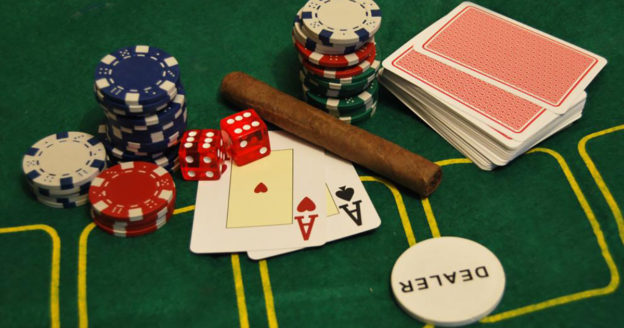Deception is an integral component of poker, often distinguishing amateurs from experienced pros. This strategy involves fooling opponents into making poor decisions based on false information.
Deception in poker does not equate to cheating or taking unfair advantage of someone for one’s own gain; rather, deception typically refers to subtle tactics designed to increase your odds of a successful bluff attempt.
Projecting an Illusion of Weakness
First step of mastering poker deception involves creating the illusion that your hand is weak. You can do this by slowly playing your cards or by raising with a hand that won’t win the pot on its own. Doing this helps opponents believe your hand is strong and give themselves an opportunity to beat you.
Bluffing is another essential strategy used in poker. This technique involves strategically representing your strength to mislead opponents and requires an in-depth knowledge of various aspects of the game such as Stone-Cold Bluffing, Story Bets Creation and Aggressive Vs Passive Bluffing. Furthermore, you must control your emotions during heated moments while maintaining a stoic poker face to be successful at this skillful move.
Just as con artists use deception for malicious reasons, you are only trying to improve your odds of winning poker by engaging in deceptive practices with the intention of winning it yourself. But just as any strategy or tactic must only be employed if they prove profitable; otherwise they may end up ruining the game for your opponents and costing money in lost stakes. To help make sure your deception pays off for you, track results of all bluffs so you know which type works best with you and measure results of them accordingly.
Initiating Bets
Use deception to manipulate your opponents is an integral skill when playing poker, enabling you to influence them into doing things they wouldn’t usually do, in order to maximize the value of your monster hands or convince them of your bluffs more successfully. Furthermore, deception helps you play the metagame more efficiently, which is essential in creating winning strategies.
Making your opponent defensive by initiating the first bet in any betting round can make them reconsider their next raise, since you will provide information about their true or purported strength of hand. It also keeps them curious and reduces the chance that they’ll fold out of good hand before its time!
However, you must use this tactic sparingly as other players will soon learn of your intentions and adapt. Furthermore, be wary of showing any sign of weakness such as checking or fidgeting with chips, indecision, or hesitation which may signal weakness to opponents.
This can be especially important if you enter late into the betting order. Early bettors can gain invaluable information from how your opponents react to your bet, helping them to make wiser decisions in subsequent betting rounds.
Semi-Bluffing
Semi bluffing is an effective way to communicate hand strength without actually showing anything, and to confuse opponents. Furthermore, this approach offers drawing hands as potential winners against different opponent types.
Timing Your Bluff Deliberately selecting the optimal time and place to bluff can be critical to your success in poker. Overusing this strategy may make you predictable, leading your opponents to call your bluffs more frequently; thus it is essential that your bluffing be balanced with value bets for optimal results.
Undermining your opponent by initiating a bet with a weak hand is an excellent way to bluff. By doing this, it could cause them to think you are actually adding money into the pot if called upon; however, only do this when there is enough equity for you to win it if called.
Semi bluffs with draws offer you the highest probability of victory against made hands, though you must first assess opponent tendencies and table dynamics to find appropriate times to employ this strategy. Also important when making this decision: size of bet – too little may not scare opponents into folding while too much will cost more chips if called upon by them!
Making the Most Obvious Choice
Poker, from its early beginnings on murky riverboats to its modern online form, has always had an air of mystery about it. No surprise there – mastering poker requires deception and an intuitive understanding of human psychology – yet sometimes even more obvious strategies may prove most successful.
Tells are an integral component of poker and all poker players have at least some knowledge about them. While you should avoid spending too much time trying to spot unconscious tells, studying betting patterns and body language of other players can provide useful clues as reliable tells. Conversely, it may be possible for someone acting contrary to what they truly feel can also fake a tell by acting out accordingly.
If you have a marginal hand, sit up in your chair, wiggle around a bit and lean forward slightly – all can send false tells to your opponents and lead them into believing you have a stronger hand than is actually the case. Remember to act smart when doing this though — overdoing it may cause opponents to catch on and call your bluffs with weaker cards themselves! With some practice though, deception becomes second nature: making people believe anything they want them to. That is exactly the goal of poker deception: leading people into making bad decisions in your favor – that is exactly why poker deception exists: fooling people into making bad decisions for themselves by means of tricking others – that is exactly why poker deception exists: fooling people into making poor decisions themselves for you and fooling people into making bad decisions themselves for you and only doing what benefits yourself in return!



